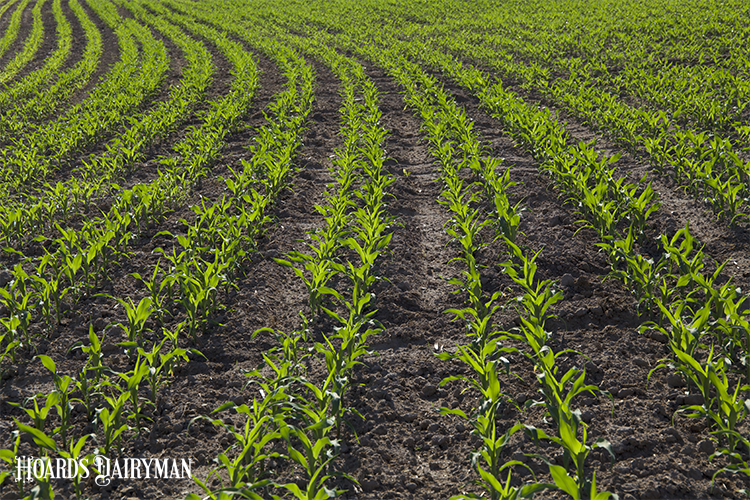
Farming is filled with factors that are out of our control, and one of the main ones is the weather. Unfortunately, we can’t tell Mother Nature what we need and when, but if we could, University of Wisconsin-Madison’s Joe Lauer shared what would be the ideal weather conditions for growing corn for silage during a recent Badger Crop Connect webinar.
“I always say to ‘Prepare for the worst and pray for the best,’ and crop insurance helps a lot with that,” shared the agronomy professor.
The two main challenges corn crops face, particularly in the Midwest, are cool, wet springs and then dry and hot conditions during pollination. Wet springs result in a lack of root surface area, and drainage is critical to help reduce this risk. Meanwhile, hot and dry conditions at the pollination stage can impact kernel set and grain filling.
According to Lauer, the ideal growing season would start out with a spring dry enough for early planting, but wet enough to activate herbicides and promote good stands with uniform emergence. Then, we hope for warm, sunny days, with a lot of sunshine and about one inch of rain per week.
“Temperatures that are comfortable for you will be comfortable for the corn plant,” Lauer noted.
He reminded listeners that for states like Wisconsin, there are 40 days to make grain yield. To achieve a 200 bushel per acre yield, the corn must average 5 bushels per acre gains per day.
As autumn approaches, the wish list changes slightly. “In the fall, we want to see cloudy, mild weather to extend that harvest window and allow us to have more opportunity for a moisture silage window of 60% to 70% around September 15,” Lauer explained. On the other hand, for corn that will be harvested for grain, sunny and dry fall weather will help speed up the dry down process.
Lauer emphasized that weather is also about timing. It could be an average year, but when the “ideal” temperatures and precipitation occur can make a big difference. And again, even though we can hope and pray for productive growing conditions, Lauer said, “Accept the fact that Mother Nature has the upper hand.”
Factors that we have more control over include cutting height, timing of harvest, packing density, and reducing shrink in stored feed. Lauer also reminded listeners that the characteristics of good forage include high yield, high energy (digestibility), high intake potential (low fiber), high protein, and proper moisture at harvest for storage.








